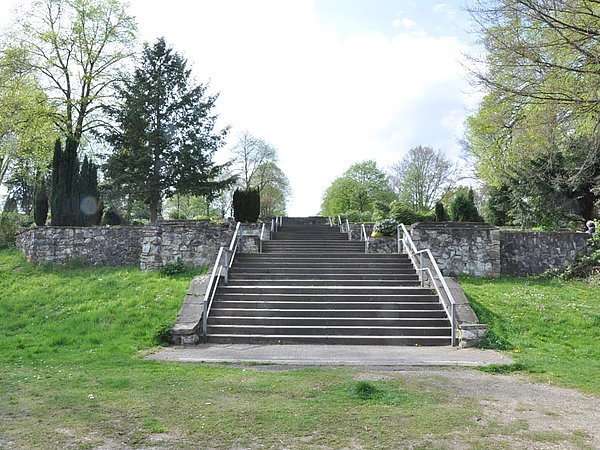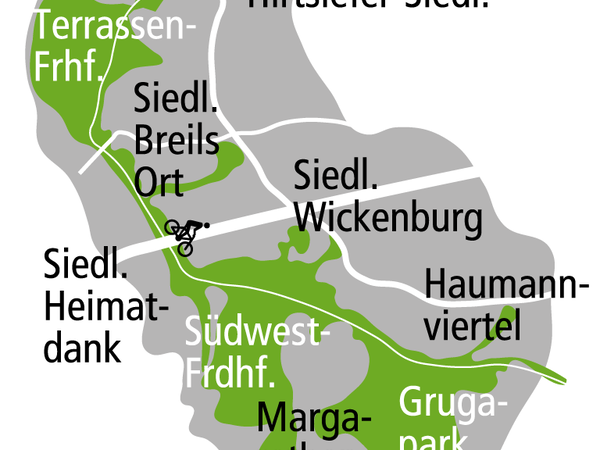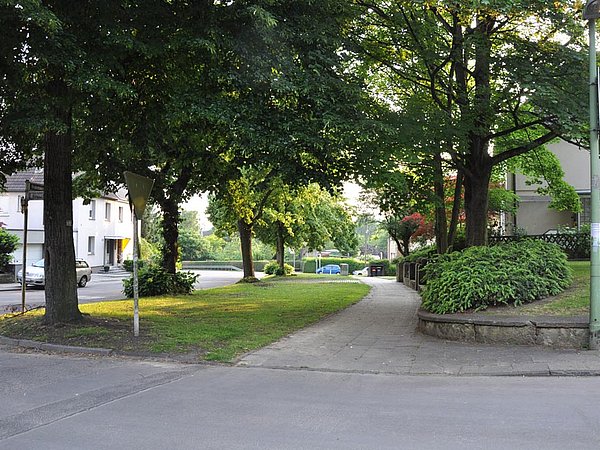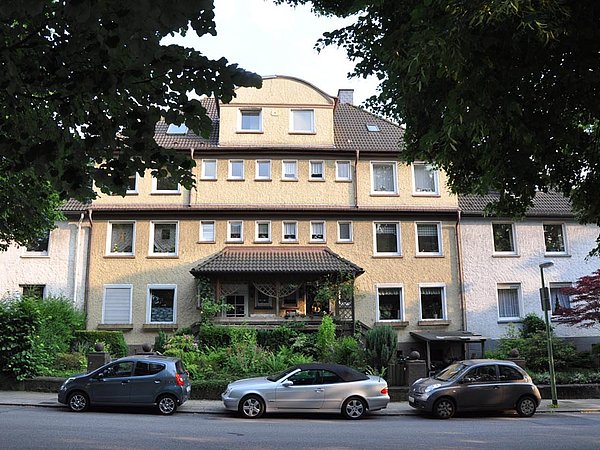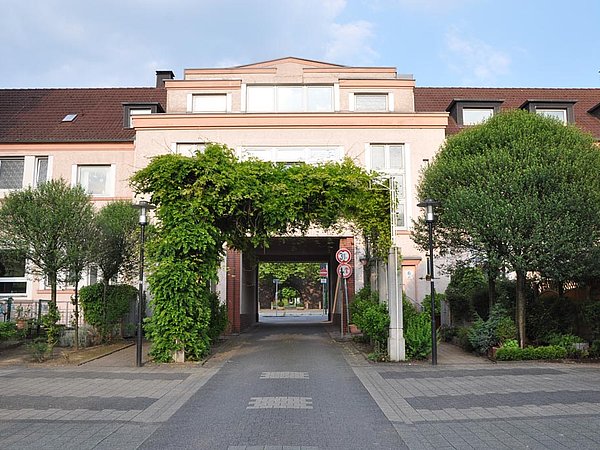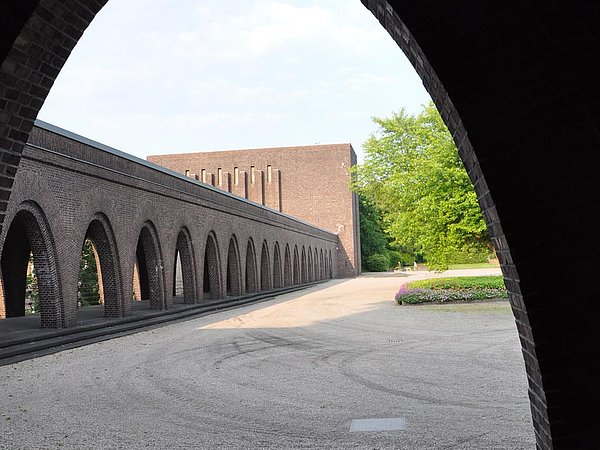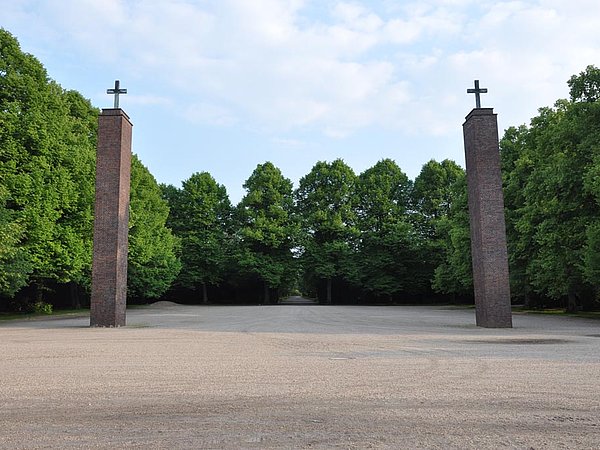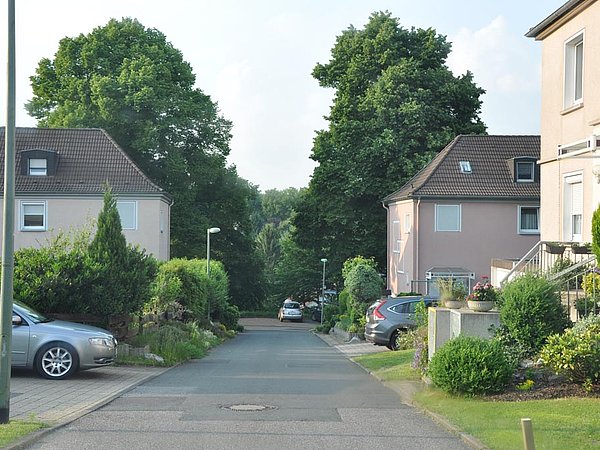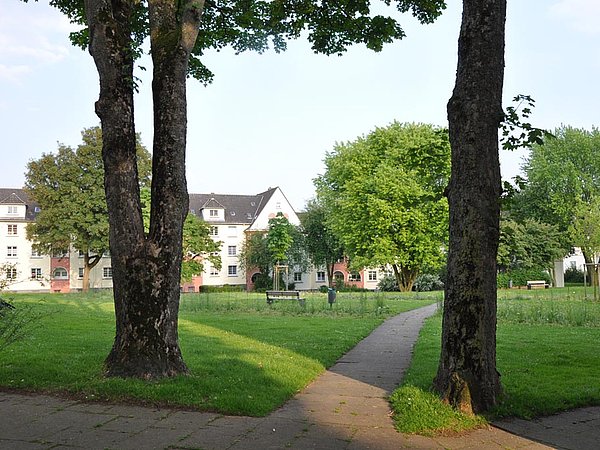Southwest Reform Architecture Walk
Walk with examples of reform architecture, green estate ring, park-like cemeteries and the Grugapark
The walk starts at the Bockmühle stop –you mostly walk through the Mühlbach Valley via the Gruga cycle path with small detours up the hills. First of all, you walk through the Hirtsiefer residential estate with the Bockmühlen Park, from there you reach the Rheinische Bahn cycle path, which at this point lies in the flatter Mühlbach Valley. The Terrassenfriedhof cemetery (Ernst Bode, architect, and Rudolf Korte, Director of Horticulture) is a park-like cemetery dating from the 1920s. Here, you pass through large historical railway yards, tunnels and bridges and arrive at the Breilsort housing estate, which was built by Georg Metzendorf. The route takes you via a sweeping road with a broad green strip and front gardens down into the Mühlbach Valley. Here, you can clearly see how at that time reform architecture created a gentle transition from the city to nature. The route passes over the Mühlenbach stream and through the Mühlbach Valley to the Heimatdank residential estate (built by Josef Rings, DWB (German Association of Craftsmen), Weimar Republic). You leave the cycle path via a small bridge over the already renaturalised Mühlenbach stream. You go uphill right through the estate above the Mecklenbeck Valley and then through a gate building over Fulerumer Straße, designed as an avenue, directly to the park-like Südwestfriedhof cemetery. (Ernst Bode, architect, and Rudolf Korte, Director of Horticulture) You return to the Mühlbach Valley via Fulerumer Straße. On the right there is the Nachtigall Valley with the Kesselbach stream which flows there into the Borbecker Mühlenbach stream. We again cross over the Mühlenbach stream on a small bridge to get to the Wickenburg housing estate up the Kleinborgshang hill. This is a landscaped historical Krupp estate, which was built by Robert Schmohl. You pass through green inner courtyards and archways back into Mühlbach Valley onto the cycle path to Margarethenhöhe. You go under the attractive historical round arch bridge into Margarethenhöhe garden city – both the bridge and the estate were built by Georg Metzendorf. You return via the centrally located market square to Mühlbach Valley in the direction of Gruga. Here, the Botanical Gardens are particularly worth seeing. This is the older section of today's Grugapark and still retains its original appearance (1927). Please note that you have to pay to enter the Gruga Park. The Conifer Section, the Westphalian Farmer's Garden, Rose Garden, Alpinum (alpine garden), Dahlia Arena as well as the Rhododendron Valley are worth seeing. The Gruga cycle path goes into the Haumann Quarter (1907) after about 250 metres. One element of the Haumann Quarter is a 500-m green strip coming from the Mühlbach Valley. If you return on the Gruga cycle path in the direction of the Altenhof Estate II (Robert Schmohl, 1903), you come to the Stadtwald Nature Walk (city woods).
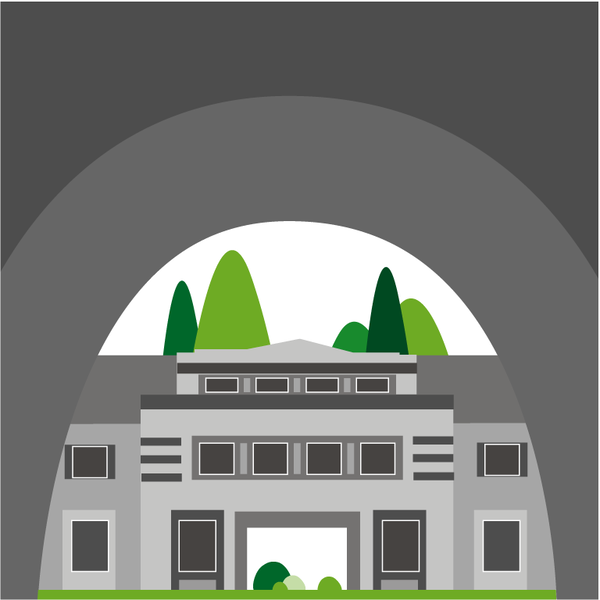
Contact
BockmühleEssen
Further Information
Description of route
From the Bockmühle stop
75 m to the Hirtsiefer estate
Follow Altendorfer Straße, turn left onto the Rheinische Bahn cycle path, then follow this path to the Grugapark (from 2015)
Share this page
